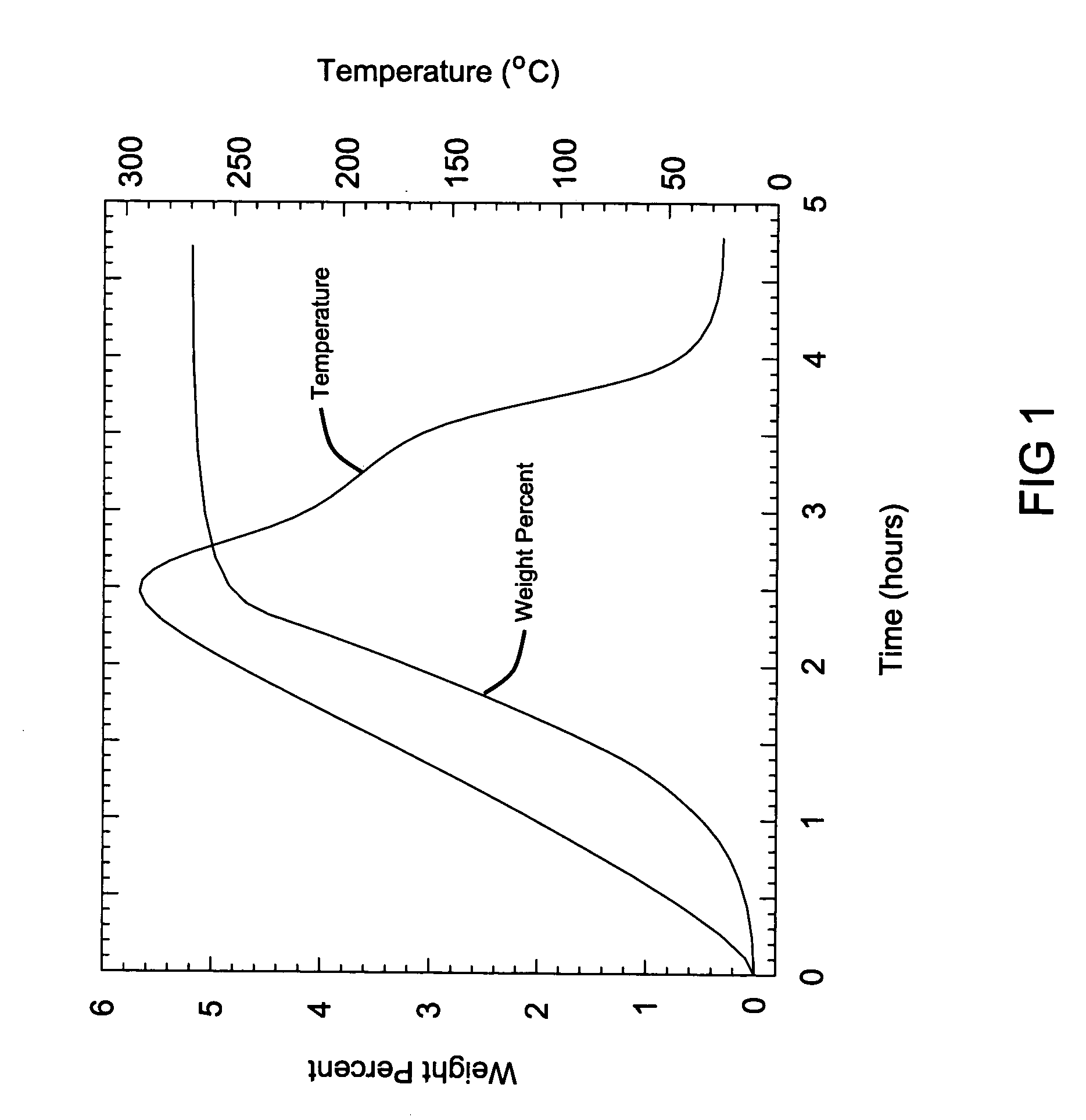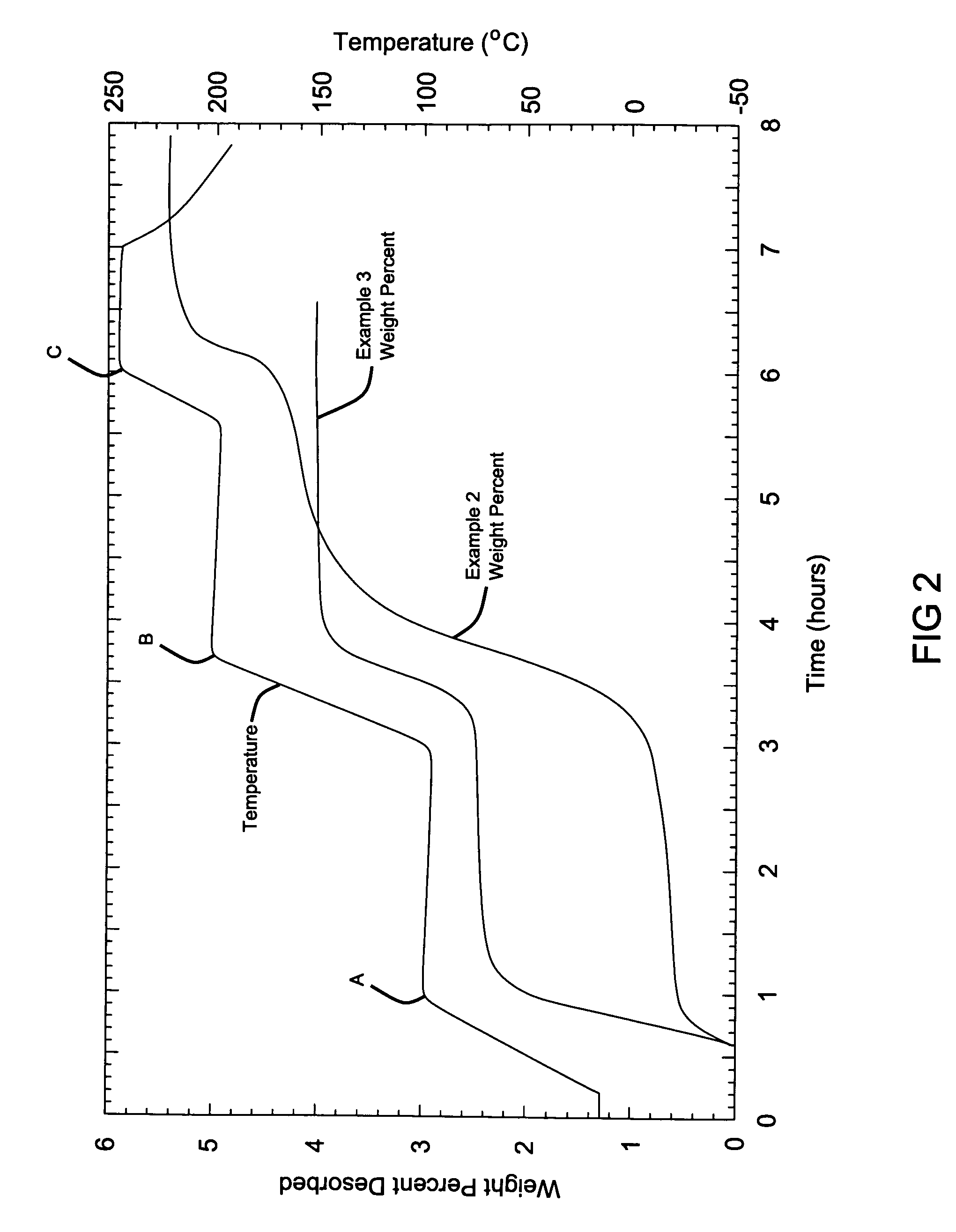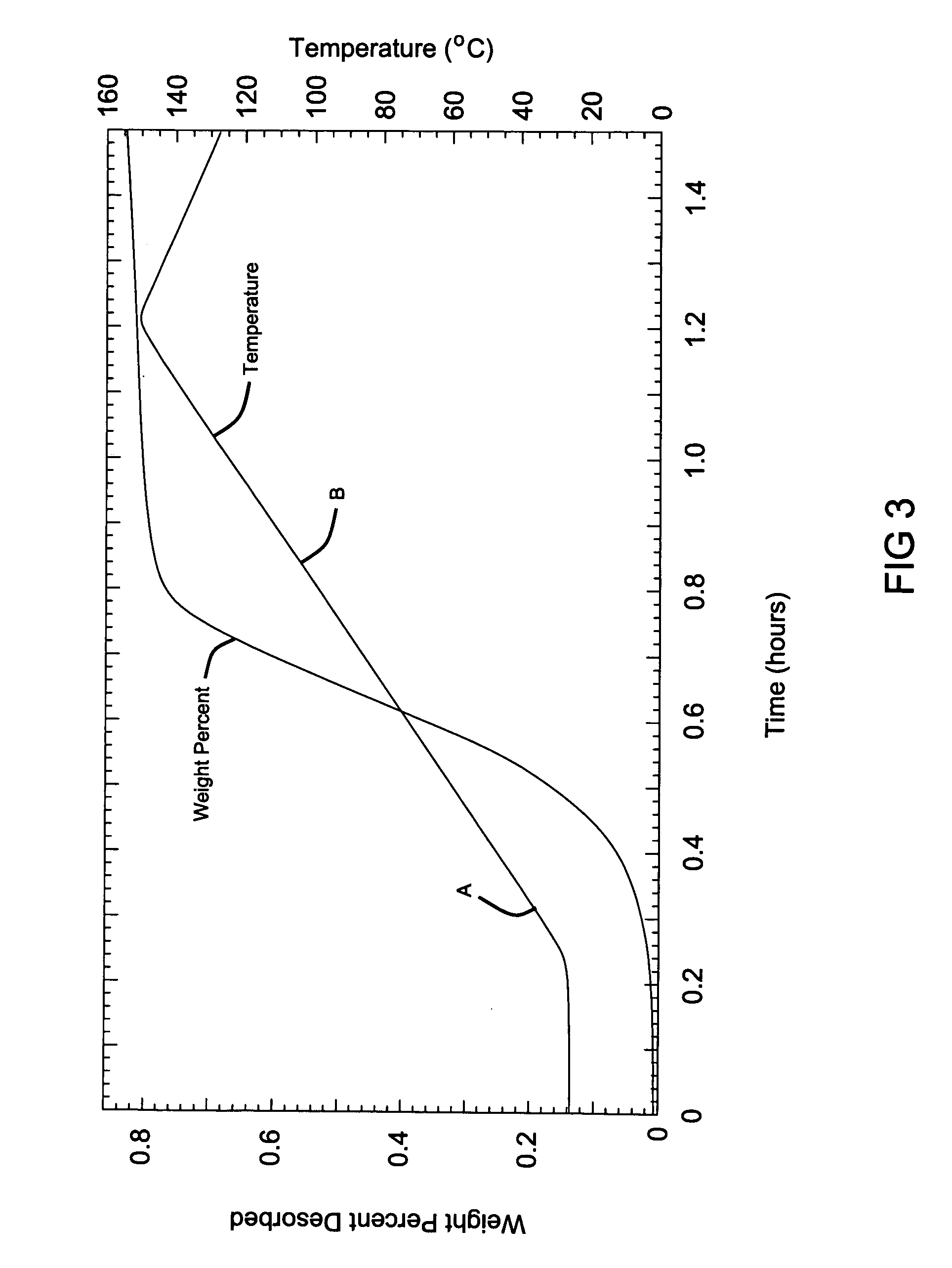Hydrogen storage materials and methods including hydrides and hydroxides
- Summary
- Abstract
- Description
- Claims
- Application Information
AI Technical Summary
Benefits of technology
Problems solved by technology
Method used
Image
Examples
example 1
[0062] This example demonstrates the hydrogen storage material system where MI and MII are selected to be lithium in the hydrogen storage material system. An equal molar ratio of lithium hydride (LiH) and lithium hydroxide (LiOH) were weighed at 0.248 g of LiH and 0.756 g of LiOH and were mixed to form the hydrogenated mixture the hydrogen storage media system, that releases hydrogen according to the following reaction to produce hydrogen:
LiH+LiOH→Li2O+H2.
The mixing was accomplished using standard ball milling techniques at room temperature under ambient conditions for 60 minutes. Some hydrogen generation was noted during the milling process. The mixture was then heated at a rate of 2° C. per minute up to a maximum temperature of 300° C. while under ambient conditions and analyzed by a modified Sievert's apparatus, where the volumetric gas absorption is measured and converted to a weight percentage.
[0063] This analysis is shown in FIG. 1, where a total of 5.3 weight % was genera...
example 2
[0064] The hydrogen storage material system is the same as that in Example 1. Equal molar ratios of lithium hydroxide (LiOH) and lithium hydride (LiH) with measured amounts of 0.249 g LiH and 0.749 g of LiOH were mixed together and mechanically milled using the same ball milling techniques as described in Example 1, except that the mixture was milled for a shorter duration of 12 minutes.
example 3
[0065] A hydrogen storage material system where the hydride is lithium hydride (LiH) and the hydroxide is lithium hydroxide (LiOH), similar to Example 2 above, is reacted in the presence of a catalyst, titanium chloride, TiCl3. A mixture of an equal molar ratio of lithium hydride (LiH) and lithium hydroxide (LiOH) weighed as 0.201 g LiH and 0.611 g of LiOH were mixed with one another. The catalyst was further added during milling at 10 mol % weighed at 0.385 TiCl3, and the entire mixture was then milled for 12 minutes.
[0066] The resulting samples from Examples 2 and 3 were subjected to a modified Sievert's analysis, where heat was applied in increasing steps. The first heating step reached a temperature of 100° C. (point A), the second step ramps up to 200° C. (point B) and then the final step reached 250° C. (point C). As can be observed from the data, the hydrogen generation began at approximately 80° C. for the Sample from Example 2 without a catalyst. As the temperature was hel...
PUM
 Login to View More
Login to View More Abstract
Description
Claims
Application Information
 Login to View More
Login to View More - R&D
- Intellectual Property
- Life Sciences
- Materials
- Tech Scout
- Unparalleled Data Quality
- Higher Quality Content
- 60% Fewer Hallucinations
Browse by: Latest US Patents, China's latest patents, Technical Efficacy Thesaurus, Application Domain, Technology Topic, Popular Technical Reports.
© 2025 PatSnap. All rights reserved.Legal|Privacy policy|Modern Slavery Act Transparency Statement|Sitemap|About US| Contact US: help@patsnap.com



